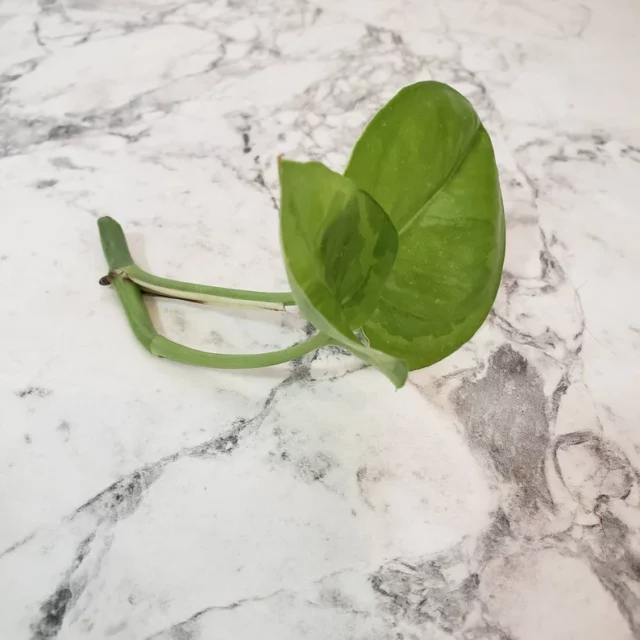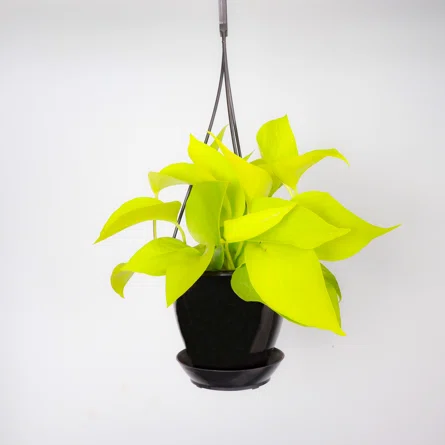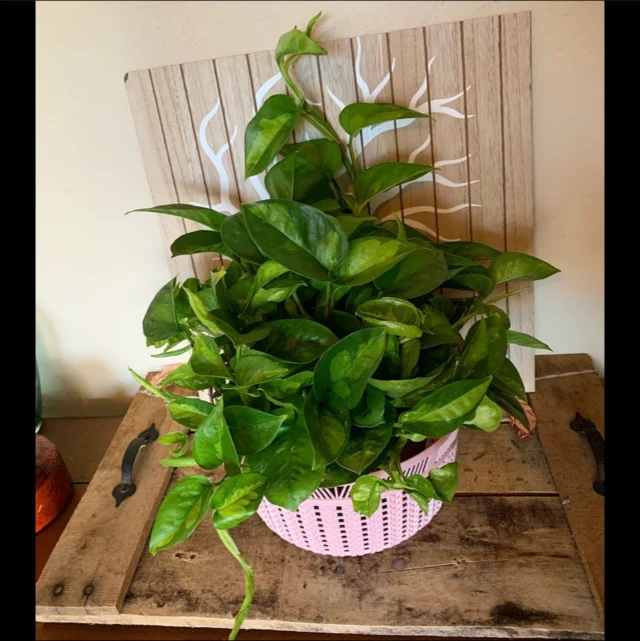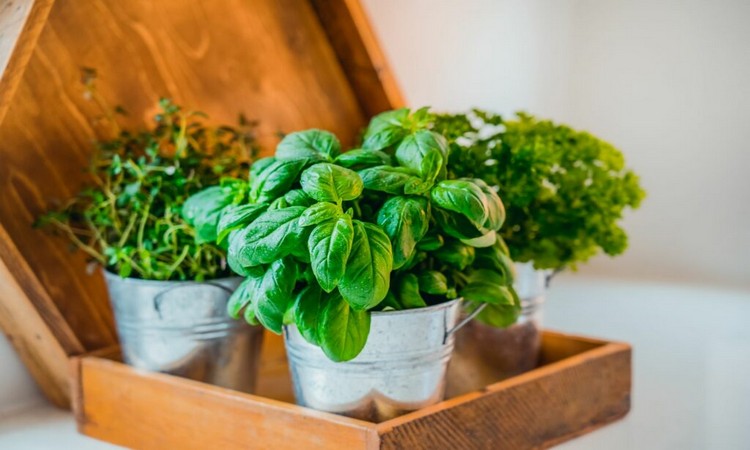Emerald Pothos vs Global Green
Emerald pothos and global green pothos look alike to most of us until we take a few minutes to learn how they’re actually different plants. Emerald greens have light green edges with darker green variegation while global greens have darker green leaves on the edges and light green variegation.
Each variety is beautiful in its own right and will add style to your home.
 What is an emerald pathos plant?
What is an emerald pathos plant?
An emerald pothos plant or epipremnum qureum has shiny heart-shaped leaves.

What makes emerald pothos special?
This plant is very unique because some of the dark green inner markings look like they were drawn or painted on the leaf. Middle markings of dark green extend up to the top or sides of the leaves, over the lime-green edges.
Is the emerald pothos rare?
The emerald pothos was considered to be rare until recent times. There are some emerald pothos available if you are willing to scout the Facebook marketplace and other websites. It is easy to propagate so you can add more plants to your collection.
This plant is toxic if ingested by a young child or a pet. It is important to keep the pot high enough that curious hands do not access the toxic leaves.

Where can I buy an emerald pothos?
These plants can be found on the Costa Farms website. This large gardening store has a patent on the emerald pathos that was granted by the original breeder.
Costa Farms sells it for a reasonable price.
You can also browse various websites to see if they carry it.
You Might Also Like Pothos Propogation Without The Node
How much light does this plant need?
Light conditions are very important to the pothos. It does not like the direct sun but prefers bright indirect light.
If any variety of pothos plants is losing its variegation, the remedy is often to give it less light and avoiding direct sunlight.

Watering your emerald pothos
A bit of water and indirect sunlight keep the emerald pathos happy, with less water required in the cold months and more needed in the growing season. Winter watering is usually every 7-10 days and once a week in warm months.
The sure way to see if your emerald pothos needs water is if it is dry 2 inches down into the soil. If it is, give it a moderate amount of water and make sure that extra water drains out of the drainage holes on the bottom of the pot.
Know your plant
Overwatering usually turns the leaves yellow, so if you notice lighter green leaves, allow your pothos to dry out before watering again.
Too little water will cause the leaves to droop and fall off. They grow back when the weather is warmer and they receive enough water.
Other problems causing changes in your plant may be related to humidity and soil.
You Might Also Like Will Pothos Leaves Grow Back?
Emerald green pothos is from the tropics
The natural habitat of this plant is the tropics and it thrives in warm temperatures such as those in your home. This plant needs brighter light that is indirect, and it should never have full sun.
Temperatures of 70-80 degrees are best for the emerald green pothos. The plant does not do well in cooler temperatures, but it likes indirect sun shining on it.

What happens to emerald pothos when the environment is too cold?
The plants may shed their leaves in areas that are too cold for them. Leaves usually grow back when the environment gets warmer.
It may be too cold for the plant in some areas of your home in the winter. Place it back far enough from any windows with drafts.
If possible, place the pothos in the warmest room in your home, or consider using a portable heater in the room.
The best humidity for emerald pothos plants
The emerald pothos requires high humidity. It may need to be supplemented with a room humidifier in the cooler months. A good humidity level can be accomplished indoors by taking the following steps:
- Mist the plant leaves 2 or 3 times each week.
- Place the plant on top of a tray filled with water.
Humidity and Fertilizer
A sign that the humidity in your home environment is not high enough for the emerald pothos is falling leaves from the plant. Another sign is leaves turning dark in shades up to dark brown.
Emerald pothos plants don’t need fertilizer, but they do require soil that drains well. Sitting water in their pot can cause root problems and lead to a very sick plant.
The growth rate of the pothos is medium to fast growing. Fertilizer probably won’t help it to grow faster.
The best way to have a healthy emerald pothos is to provide the proper light, water, and humidity for your plant.
You might also like Baltic Blue vs Cebu Blue
what can I do to prevent overwatering my emerald pothos?
You can add perlite to regular potting soil. The perlite will help the plant to drain better. The soil should be of good quality.
If you are not sure that your pothos needs water, it is best to wait a day or two and check for dry soil again.
should I prune my emerald green pathos?
You can either prune your emerald pothos plant or let it grow. It is a vine and will grow up to 10 feet in length.
Emerald pothos plants are fast growing if their basic needs are met.

Hanging baskets allow the emerald pothos to hang down
If it is hanging in a basket, you may want not want to cut it to see how long it will grow. Some plant owners place the hanging basket on a high shelf and let it grow down.
pruning gives a fuller appearance to your emerald pothos
You may want to prune leggy stems that have few leaves so that your plant looks fuller and more beautiful with many leaves gathered in one pot without the stems standing out.
Make stem cuttings to propagate new plants
It is easy to make cuttings from the parent plant and to encourage root growth in a jar of water. Use purified water or allow the water-filled jar to sit overnight for chemicals to evaporate. This is the safest way to propagate your plants.
Roots will grow when you make a cutting at the stem. Make sure that the cutting has 4 or 5 leaves on it.
You Might Like Epipremnum Care: Expert Tips On Buying, Multiplying For Pothos Plant
How to start the roots
Remove the bottom 2 or 3 leaves from the stem cutting. Place it in the jar of water, covering the spots where you removed the leaves with water.
In a few days, you will see roots beginning to grow out of these spots. When the new growth is about 1 inch long, plant the cutting in the soil in your pot with drainage holes.
You may be interested Do Pothos Like To Be Root Bound
What is a global green pothos?
A global green pothos or epipremnum qureum is much like the emerald pothos except it has variegated leaves with light centers on dark green leaves.
The epipremnum qureum, the scientific name for the global green pathos, is a lot like any other pathos variety except for its unique markings.
Global green pathos plants are hearty and provide freshness and beauty to your home with very little effort.
Is the global green pothos rare?
The global green pothos is not rare. It can be purchased from garden stores and home goods stores like Lowe’s and Home Depot.
How much water does the global green pothos require?
You may be wondering how much to water global green pothos. The rule of thumb is to water once a week in summer and every 7-10 days in cooler weather.
What does global green pothos revert to?
Not enough light can cause your global green pothos to lose their variegation. More light usually results in more variegation as long as it is not direct sunlight.
Indirect light gives global green pathos beautiful coloring with light green variegation.
How are the emerald and global green pathos alike?
These two plants are alike in most ways. They are both easy-care plants that do not require fertilizer or special treatment, and neither one likes direct sun.
They are from the same family and grow at about the same rate. If you provide indirect bright sunlight, they will grow and have variegation that stands out among other plain plants.
In what ways are emerald pathos and global green pathos different?
There are some differences between the emerald and global green pothos that we will discuss below:
- The global green pathos had a different color arrangement than the emerald pathos.
- Global green pothos plants have leaves that may curl upwards or crinkle rather than have a flat appearance.
- You can buy cuttings of emerald pathos online and in a few garden stores regardless of the patent on this plant.
- The emerald is still somewhat rare and not always easy to find.
- Global green pathos is easy to find and can be purchased at stores that sell plants.
- Other pothos plants are all much like the emerald and global green pothos varieties
- Neither the emerald nor the global green like too much water or too much sun.

How many types of pothos are there besides global green pothos?
Biologists say that there are up to 38 different types of pothos plants. Others say that there are far fewer, but around 25 varieties can be identified.
Some other types of pothos plants are easier to identify than the emerald and the global green pothos. They are all basically the same plant with unique markings on each leaf. Here are some other varieties.
- Jade pothos — The solid green leaves do not have variegation of any kind, but each leaf is solid in color. If there are lighter or darker shades of green or golden specks, then it’s not jade pathos!The jade pothos is easy to find in most garden stores or online.

- Golden pothos —The Golden pothos is the most popular variety. Its yellow variegated markings stand out against the rest of the darker leaves.

- Neon pothos — Its lighter leaves are truly unique! The neon pothos is bright and different from other houseplants. It requires a lot of indirect bright light to keep its color.

- Marble queen pothos — The marble queen has golden variegation streaks marbled with darker leaves. It is one of the most popular pothos varieties because of its lovely appearance.

how do I know which pothos to buy?
Deciding on which pothos to buy and bring into your home is a matter of your preference. Although varieties look somewhat different with various types of variegated leaves, they are all basically the same.
They are easy to care for and are healthy and hearty. It is easy to propagate more plants by taking cuttings and proceeding in the same way as described above for the emerald pothos.
Other plants can be set in the same area as your emerald or global green pathos, both indoors and outdoors. The pothos will thrive if given basic care.
You can make a beautiful arrangement by planting 2 or 3 varieties in a large pot.
You Might Like Why Is My Money Plant Leggy
do I need to Transplant my global green pothos plant?
Yes, occasionally the global green pothos needs a new well-draining pot with room for growth, Check to see if the plant is crowded in its current pot or if its roots are growing out of the bottom holes. If so, it is time for a larger pot.

how do I transplant the global green pothos plants in my home?
It is easy to transplant the global green pothos into a bigger pot. Have the larger pot and good quality potting soil mixed with perlite ready to use and watch your pothos thrive!
how do I take my global green PATHOS out of its current pot when it is root bound?
Sometimes the roots grow in the pot crowded together and attaching to the sides of the pot. Carefully remove the pothos by gently detaching the plant from the pot.
The pothos variety is a vine so it grows small “hands” that hold onto the sides for support. You can also set a moss pole in the pot so that it grows up the pole. Training may require some gardening tape until the global green can hold onto the pole by itself.
place the global green pothos in the larger pot
After digging a hole for the entire plant, place the global green pothos into the soil. Cover it entirely and fill the pot with additional soil until it is about 1 inch from the pot top.
Your global green pothos must be watered and placed in indirect sunlight after transplanting them. A small table or shelf away from the window will be just right for your global green pothos.
Global green pothos propagation
It is also possible to propagate global green pothos by cutting a piece off the stem that is about 10 inches long. Remove the bottom few leaves and place them in a jar of water.
The global green will grow roots from the area where you removed the leaves. When the roots are about 1 inch long, it is ready for its own pot.
Using this cutting technique to propagate global green pothos makes it a simple way to get more plants.
You Might Like Flowers That Start With E
does the global green pothos have problems with pests or diseases?
Global green pothos generally has few problems with pests or diseases. If you see fluffy white balls on the front or back of the leaves, this is probably a sign of mealybugs. They are the most common type of pest to the global pothos.

how do I get rid of the pests?
Spray off the cotton-like balls from the leaves of your global green pathos. This can be done in the kitchen sink, shower, or outside with a hose.
Next, spray neem oil plant treatment on the leaves and stems. Do this before the insects have a chance to lay eggs or the infestation will spread and worsen.
what diseases are common in the global green pothos?
Diseases are very rare in the global green pothos. One thing to watch for that can severely damage your plant is root rot.
how is root rot treated?
The best treatment for root rot for your global gree is to transplant it. Cut off the diseased roots so the rot doesn’t spread. Plant the global green pothos in a new pot with new potting soil mixed with perlite.






